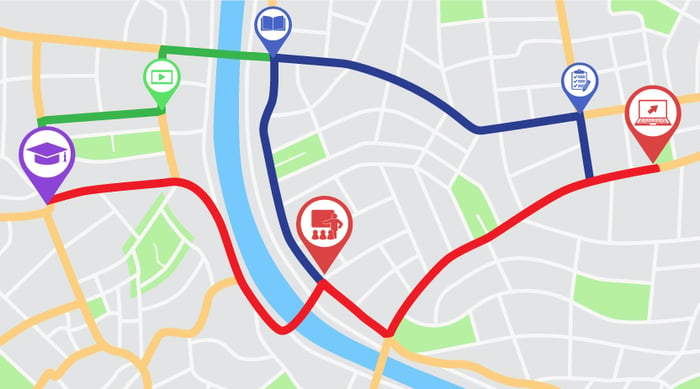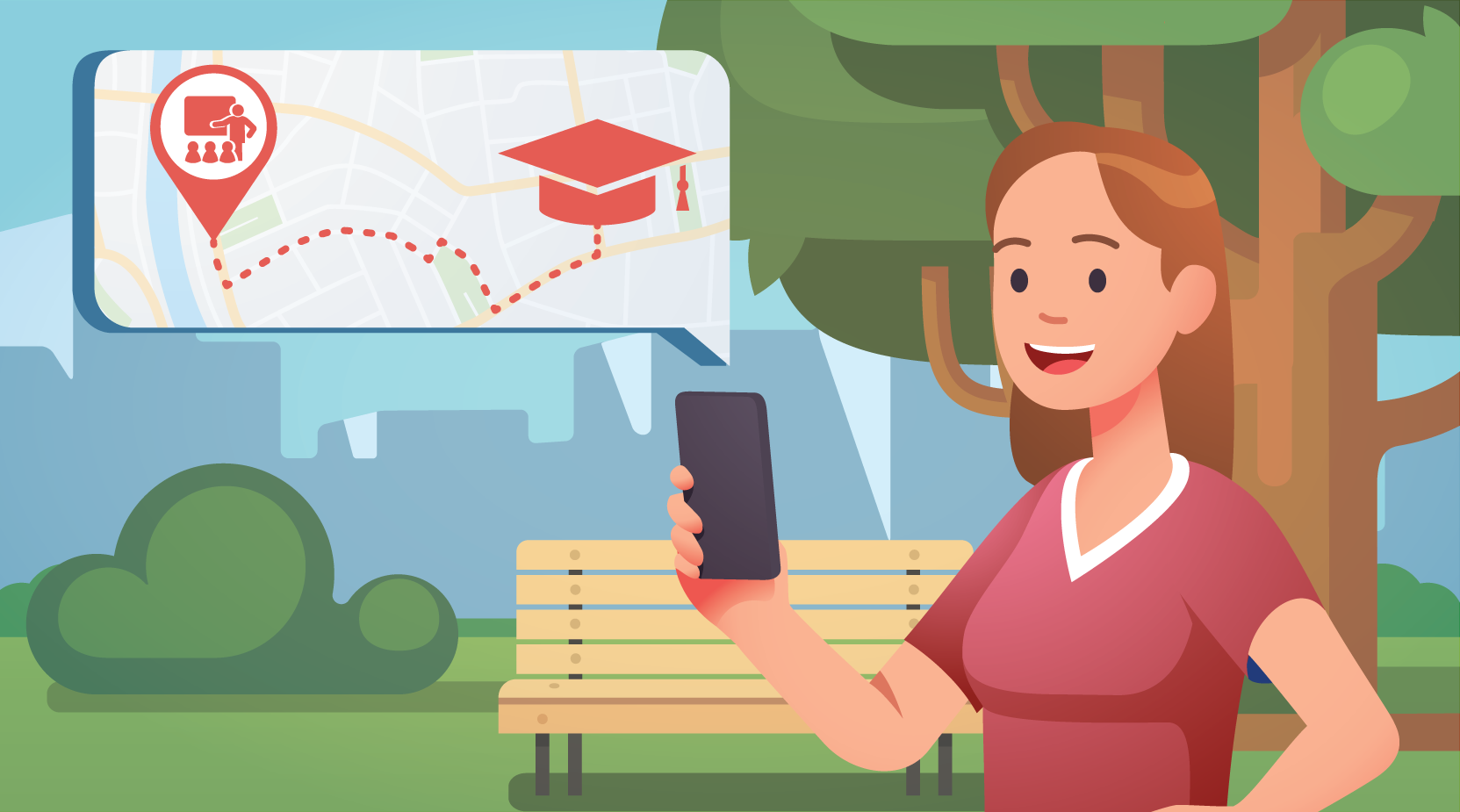Personalized learning paths are all about giving the learner control over their learning journey. They choose the pace, they select which objectives to focus on, and they can adapt their goals if necessary. This is not only empowering for the learner but improves their engagement and retention of the materials.
A personalized learning path is a selection of modules or courses linked in a structure for learners to progress and master a particular topic. Unlike a traditional ‘one size fits all’ linear approach to learning, the goal of personalized training is to make it more flexible so that it can vary by learner needs. This ensures learners receive essential training to assist them in their specific role while putting them in the driver’s seat to learn anytime, anywhere and with the option to complete additional learning events to round out their skills.
All personalized learning paths should have 4 things in common:
- Personalization: Learning paths take the specific needs and interests of the learner into account by providing content that supports their individual development journey.
- Flexibility: In addition to required events, learners have some ability to choose the next step of their learning journey, which increases the likelihood they will remain engaged in the process.
- Multidisciplinary: A well-designed learning path should branch out into multiple related topics and disciplines to provide learners with the opportunity to broaden their expertise.
- Holistic: A successful learning path creates a complete picture of a topic or subject area that helps learners identify key connections and relate like topics to each other.
The Benefits of Personalized Learning Paths
Personalized learning paths have shown to raise motivation and attentiveness, so material is more effectively acquired and retained. People also like to see their progress towards a goal and learning paths help to accomplish this. An ideal pathway focuses on the current needs of the learner, where they would like to go in their career and what skills they need to acquire to get them there.
You can consider personalized learning like setting driving directions… instead of aimlessly driving around wasting time, you identify your starting point and your destination and then review the paths available to you. There are likely various routes that can take you there. Some may have speed limitations or winding roads and others may be a faster, more direct route.

A learning path is similar to one of these routes. It will get you to your destination, but each learner may require different milestones, or additional stops along the route to ensure they have the knowledge and skills needed for reaching their destination.
7 Best Practices for Creating a Personalized Learning Path
Develop clear learning goals and objectives:
For a learning path to be successful, they are generally made up of short-term and long-term goals, represented by learning events that the student must complete to reach their objective. The path should blend learning essentials with the needs and wants of the learner.
Create various types of content across multiple learning styles:
Some learners like to read. Others prefer podcasts or videos. Integrating a wide variety of activities and exercises into your courses will give your learners the flexibility to choose what’s best for them. And for your achievers that complete various courses, this variety will serve to teach and reinforce similar content.
Offer gradual difficulty levels:
Personalized learning paths lead learners step-by-step toward their goals but it’s important to understand there may be some may be variance in mastery levels between learners. For example, in order to obtain credit for a training, a learner might only need to complete the basic level. However, some learners might wish to further develop their skills. Offering levels of increasing difficulty to practice (and eventually master) the topic can be extremely beneficial. After all, practice makes perfect!
Include required, optional AND recommended learning events:
All career learning paths will include required learning to provide essential knowledge. Although you can enable learners to prove aptitude with particular skills to test out of training they don’t need. This would save time and energy completing unnecessary training and allow them to better focus time on what’s actually needed. On the flip side of this, adding additional types of content beyond what’s necessary allows learners to explore more about a topic at their own pace, particularly if their goal is to master a topic. And for those interested in optional learning, specific events can be recommended to them based on their individual goals and objectives.
Incorporate gamification elements into the learning path:
Drive engagement, increase motivation and prevent ‘training burnout’ by creating a fun experience for learners to advance from goal to goal. Badge programs, leaderboards and even team games to promote friendly competition can add this value to your training initiatives. Plus, recognition and cheerleading along the path can go a long way in maintaining momentum to reach their goals!
Promote empowerment:
For the learning path to truly be successful, the learner must feel in control. Selecting how they receive the content is only part of the equation. Self-assessments and periodic milestones are great ways to encourage a learner to check their progress and stay accountable.
Offer corrective coaching:
All learners need feedback and corrective coaching to know what to correct so they do not memorize the wrong way to do things. Immediate feedback is a great way to achieve this while still allowing them to learn from their mistakes. Additionally, regular check-ins with managers and/or peers allows a learner to prove they can actually do what they’ve learned and practiced.
Ready to put your learners in the driver’s seat? Reflection Software can help!
Contact us today to start assessing the goals and objectives required for a successful program at your organization.


